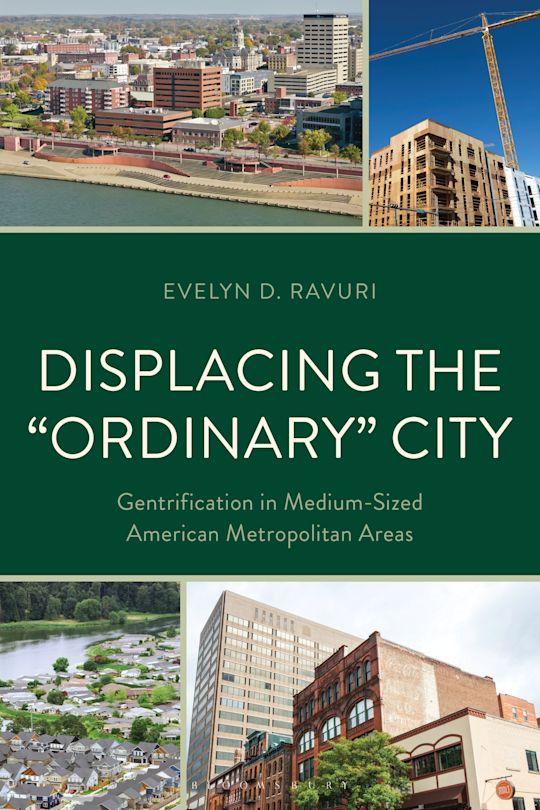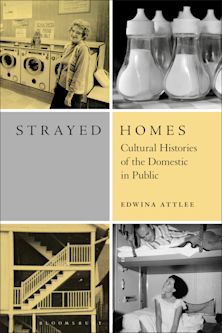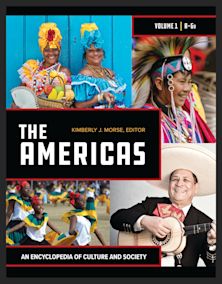- Home
- ACADEMIC
- Geography
- Human Geography
- Displacing the "Ordinary" City
Displacing the "Ordinary" City
Gentrification in Medium-Sized American Metropolitan Areas
Displacing the "Ordinary" City
Gentrification in Medium-Sized American Metropolitan Areas
Payment for this pre-order will be taken when the item becomes available
- Delivery and returns info
-
Free UK delivery on orders £30 or over
You must sign in to add this item to your wishlist. Please sign in or create an account
Description
For decades, gentrification research has predominantly focused on large cities. Arguing that gentrification has occurred throughout the urban hierarchy, Ravuri fills this gap in the literature by analyzing gentrification and displacement patterns in twelve medium-sized cities, spread across the four census regions of the US.
Table of Contents
List of Tables
Chapter 1: Introduction
Chapter 2: Overview of the U.S. Urban System
Chapter 3: A Short Literature Review of Gentrification and Displacement
Chapter 4: Making a Case for the Medium-Sized City
Chapter 5: Overview of 12 Cities/Metropolitan Areas in Study
Chapter 6: Methods to Measure Gentrification and Displacement
Chapter 7: Gentrification and Displacement in the Northeast
Chapter 8: Gentrification and Displacement in the South
Chapter 9: Gentrification and Displacement in the Midwest
Chapter 10: Gentrification and Displacement in the West
Chapter 11: Comparison of Gentrification and Displacement in the 12 Cities/Metropolitan Areas
Chapter 12: Conclusion
Bibliography
About the Author
Product details

| Published | 22 Jan 2026 |
|---|---|
| Format | Hardback |
| Edition | 1st |
| Extent | 204 |
| ISBN | 9798881804374 |
| Imprint | Bloomsbury Academic |
| Illustrations | 29 bw figures |
| Dimensions | 229 x 152 mm |
| Publisher | Bloomsbury Publishing |
About the contributors
Reviews
-
'Ravuri's book offers a fresh and innovative approach to understanding gentrification across 12 mid-size U.S. cities. By skillfully combining qualitative and quantitative data, Ravuri uncovers distinctive patterns and provides a nuanced analysis of racialized displacement. The book offers both broad trends and rich local context, making it essential reading for scholars, students, and anyone seeking to understand the complex dynamics of urban change in the United States.'
Tanya Golash-Boza, University of California, USA
-
'Evelyn Ravuri's work provides a highly informative historical and contemporary treatise of gentrification in U.S. cities. She enhances and extends gentrification discussions to include new and profound dimensions based on race/ethnicity and urban boundaries (compact versus sprawling) and includes a qualitative consideration. Evelyn uniquely examines commonalities of urban spaces, gentrification, and displacement by region (northeast, Midwest, south, and west). I highly recommend Evelyn's book for anyone: academic / urban professionals, Jane Jacobs aficionados, American culture enthusiasts, and others will find her work to be a provocative, relevant, and highly relatable read, and will find her work on gentrification to be well-summarized, thought-provoking, and compelling.'
Kevin N. Raleigh, University of Cincinnati, USA
-
'Utilizing a novel methodological approach that relies on both census data and Google Street View imagery, Displacing the “Ordinary” City provides new insights into the pattern and process of gentrification beyond the usual pantheon of large world cities. The author's examination and comparative analysis of gentrification across 12 medium-sized U.S. metropolitan areas demonstrates that spatial patterns of displacement and reinvestment do not follow predictable regional lines, nor is this process necessarily accompanied by an increase in white population (as is often expected). Additionally, the author uncovers a suburbanization of poverty, with vulnerable residents often being pushed to older suburban areas at the city-suburban interface. Tapping into Robinson's Ordinary Cities framework, the author effectively details how gentrification manifests as a diffuse, yet locally variable, outcome of the post-industrial urban economy. Acknowledging the limitations of current data and the evolving impacts of COVID-19, the book sets the stage for future comparative urban research across the U.S. urban hierarchy and beyond.'
Bradley Bereitschaft, University of Nebraska at Omaha, USA


































